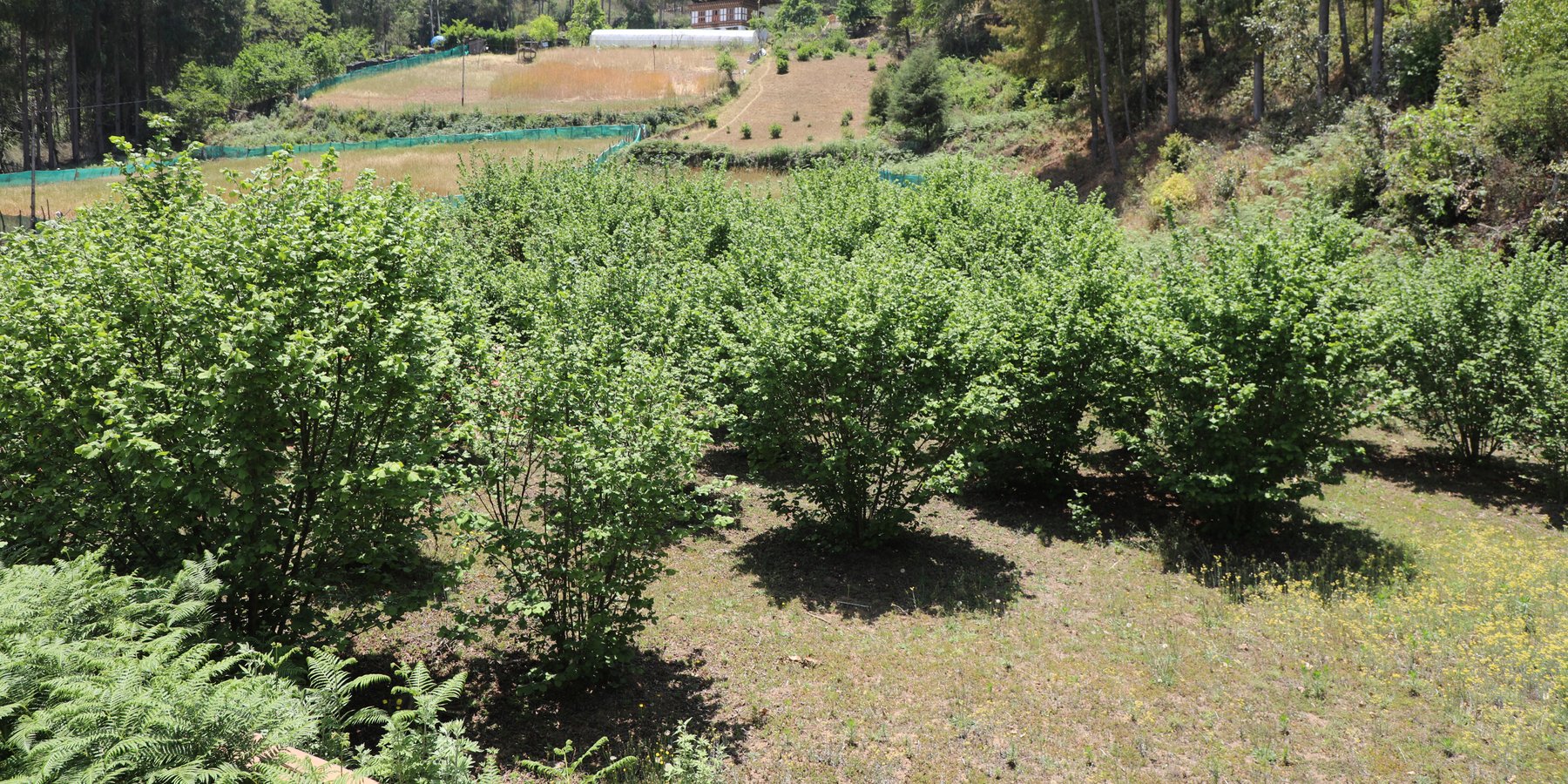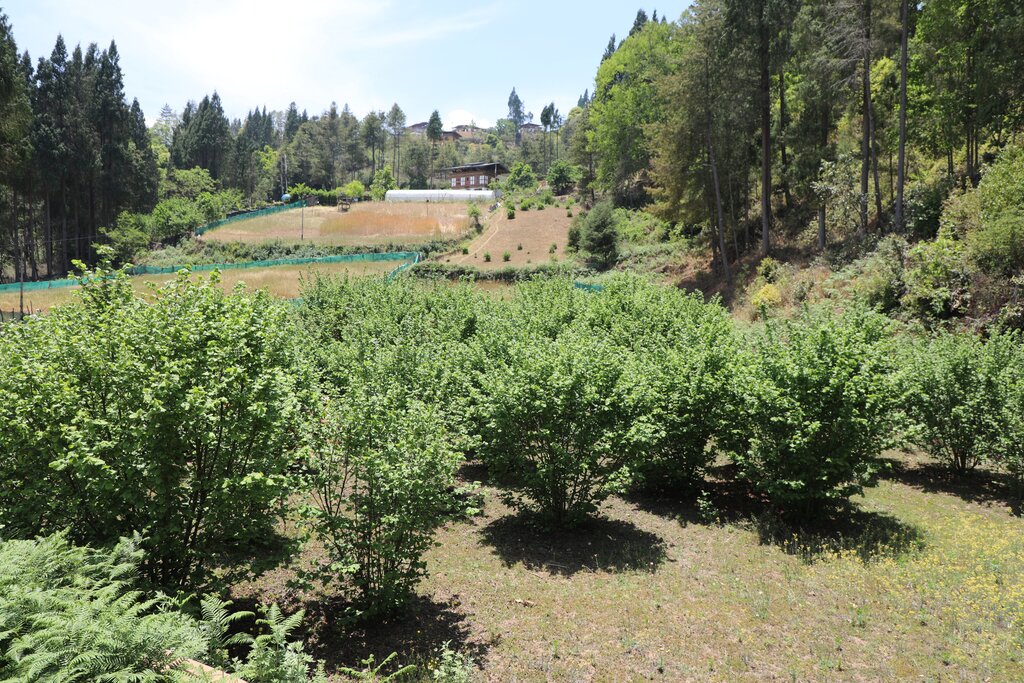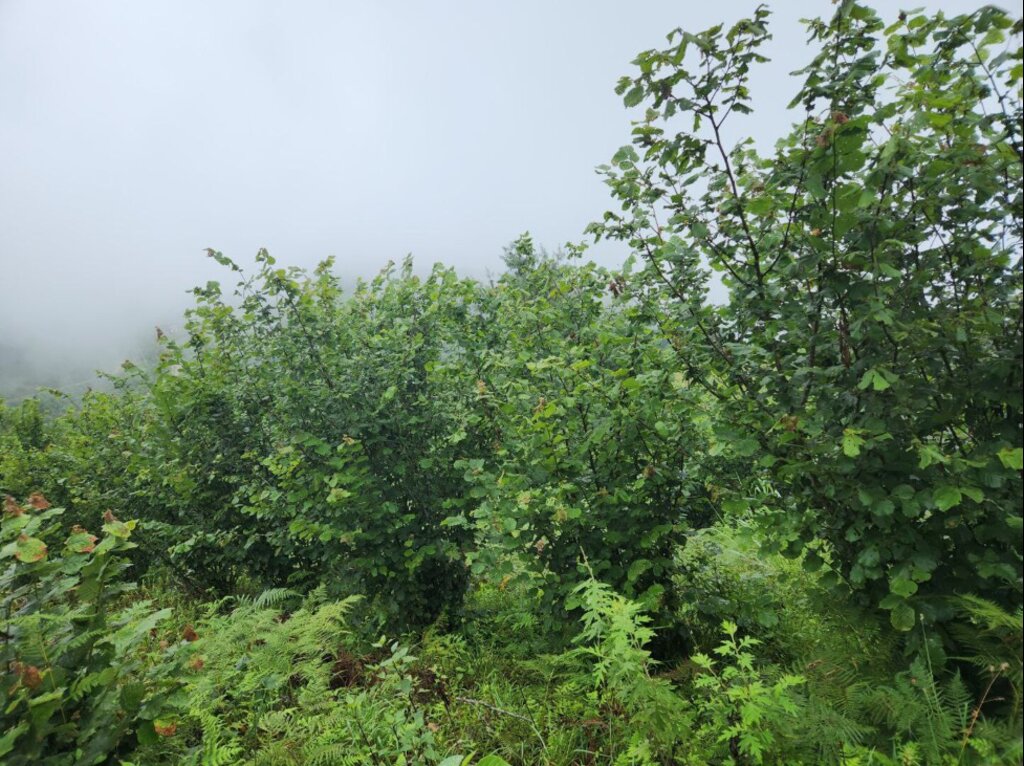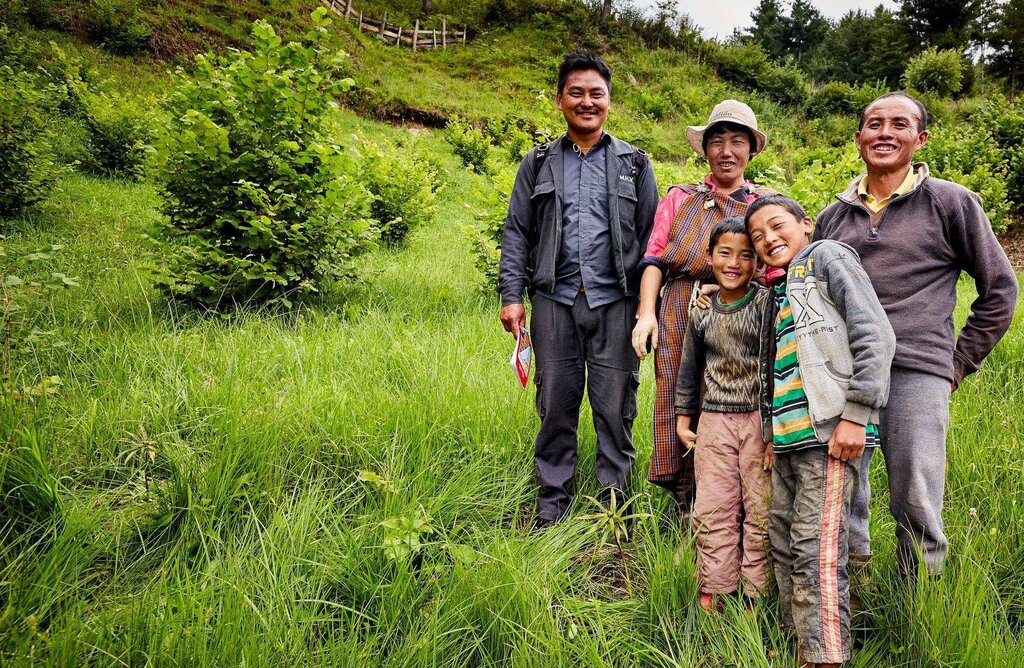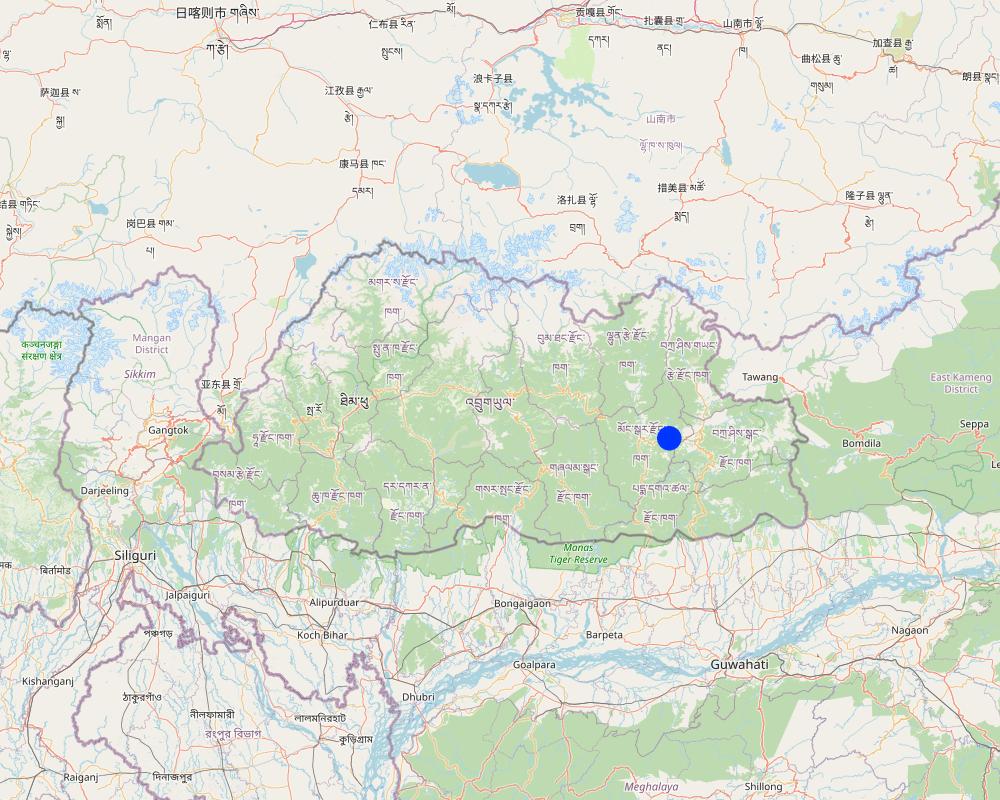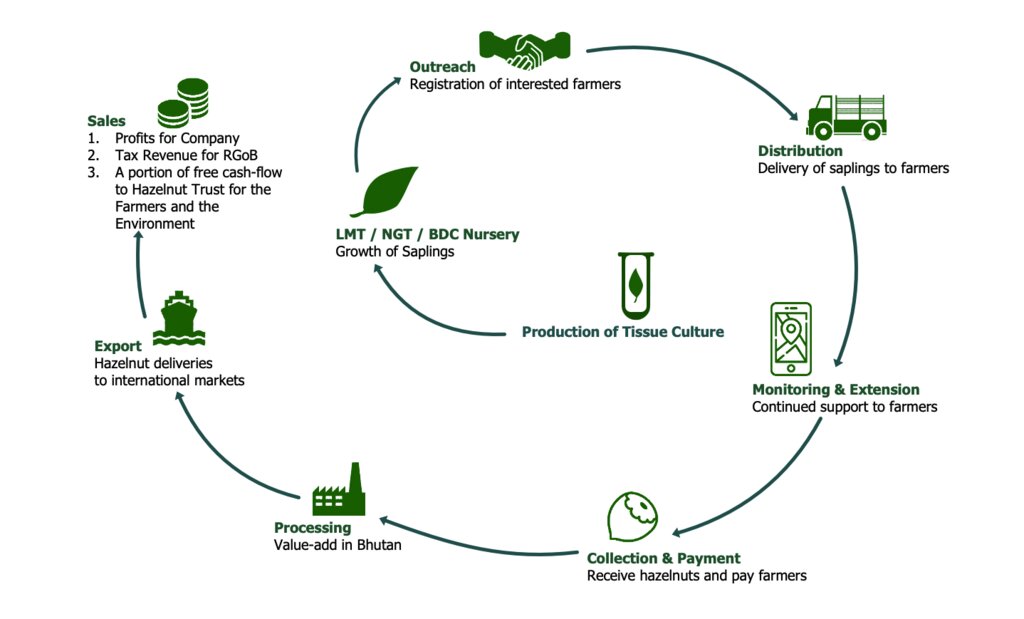Public-Private-Community Partnership for Land Degradation Neutrality [Bhoutan]
- Création :
- Mise à jour :
- Compilateur : ONGPO LEPCHA
- Rédacteur : Kuenzang Nima
- Examinateurs : William Critchley, Rima Mekdaschi Studer
གཞུང་སྒེར་དམང་གསུམ་མཐུན་འགྲེལ་ཐོག་ས་ཆ་མར་ཉམས་བཀག་འཛིན།
approaches_6843 - Bhoutan
Voir les sections
Développer tout Réduire tout1. Informations générales
1.2 Coordonnées des personnes-ressources et des institutions impliquées dans l'évaluation et la documentation de l'Approche
Personne(s) ressource(s) clé(s)
exploitant des terres:
Tenzin Karma
+975 77675442
Domlung village
Domlung village, Ngatshang gewog (block), Mongar Dzongkhag (district), Bhutan
Bhoutan
exploitant des terres:
Penjor Tshewang
+97517544223
Domlung village
Domlung village, Ngatshang gewog (block), Mongar Dzongkhag (district), Bhutan
Bhoutan
exploitant des terres:
Wangmo Yeshey
+97517680522
Domlung village
Domlung village, Ngatshang gewog (block), Mongar Dzongkhag (district), Bhutan
Bhoutan
exploitant des terres:
Lhamo Ngawang
Domlung village
Domlung village, Ngatshang gewog (block), Mongar Dzongkhag (district), Bhutan
Bhoutan
1.3 Conditions relatives à l'utilisation par WOCAT des données documentées
Quand les données ont-elles été compilées (sur le terrain)?
13/07/2023
Le compilateur et la(les) personne(s) ressource(s) acceptent les conditions relatives à l'utilisation par WOCAT des données documentées:
Oui
2. Description de l'Approche de GDT
2.1 Courte description de l'Approche
The public-private-community partnerships (PPCP) approach is a synergistically operational model that is used to achieve sustainable development in which the three parties jointly develop a business unit/service of mutual benefit and provide maximum benefit to the wider community. This approach is designed to enable economically disabled households and community organizations to generate long-term benefits through sustainable agriculture - in this case hazelnut production.
2.2 Description détaillée de l'Approche
Description détaillée de l'Approche:
The Mountain Hazelnut Venture (MHV) is a social enterprise established as a Public-Private-Community Partnership (PPCP) between the people and the Royal Government of Bhutan and a private company. The PPCP approach involves private entity funding of a project, and it has become common countrywide, The MHV has enabled a large-scale Foreign Direct Investment (FDI) project. The MHV provides hazelnut trees, agricultural inputs, and technical assistance to smallholder farmers. At harvest, the company purchases hazelnuts from partner growers, which are then processed for international export. The primary objective of this approach is to foster collaboration between the private company and the community to generate long-term income and revitalize vulnerable communities through sustainable agriculture. Hazelnut orchards stabilize mountain slopes, reduce soil erosion, improve water retention, and help adapt to, and mitigate, climate change by improving ground cover, retaining soil moisture and sequestering carbon.
The private company looks for interested farmers who are then registered. The company propagates good quality hazelnut seedlings and distributes them. This is followed up by constant monitoring by technical staff until fruits are harvested and processed. The implementation stage includes planning, providing them with necessary agricultural inputs, and technical support through extension and monitoring. Once the fruits are harvested, payment is made to the farmers. Implementation involves the MHV engaging with community members alongside agricultural extension agents to present and convince them about the benefits of the project. Additionally, the MHV provides training, workshops, and ongoing support. They finance the project while also taking on the role of monitoring and evaluating its outcomes.
There are three key stakeholders involved in this approach. They are the community members (landowners), the Royal Government of Bhutan, and the Mountain Hazelnut company. It is reported that there are more than 8,000 smallholder land users registered with MHV from 19 of 20 districts in Bhutan. The roles of the land users are to grow hazelnuts through nurturing the seedlings, harvesting the nuts, and selling them to the Hazelnut company as per the mutual agreement. Land users are provided free seedlings, consistent technical and field support, and the guaranteed buyback of nuts by the company. They also received training and assistance. The second key stakeholder is the Royal Government, who provides clearance and facilitates the establishment of business in line with the national Foreign Direct Investment (FDI) Policy. In the field, agriculture extension agents represent the government by facilitating communication between the hazelnut company and the communities. Lastly, the MHV as a private company is committed to fostering the development of entrepreneurs in the agribusiness sector across Bhutan.
The advantages of the approach to the land users are the financial, technical and material support provided by the private company. The land users can also develop their skills and knowledge through training on hazelnut cultivation and good agricultural practices (GAP). Hazelnut is a new crop in the locality.
Finally, the company is committed to generating income and improving the livelihood of rural communities in Bhutan. However, despite the noble objectives, the company has failed to realize its intended target, and this is an increasing cause of concern. Furthermore, there are complaints that the harvests have been poor – or even zero in some cases. It is clear that there had been inadequate investigation into the viability of hazelnuts in Bhutan. While failing on the economic front so far, from the land degradation neutrality (LDN) point of view, the hazelnut plantations have improved ground cover immensely thereby generating environmental benefits through stabilization of vulnerable agricultural land, reduction in land degradation and carbon sequestration.
2.3 Photos de l'approche
2.5 Pays/ région/ lieux où l'Approche a été appliquée
Pays:
Bhoutan
Région/ Etat/ Province:
Mongar Dzongkhag
Autres spécifications du lieu :
Domlung village, Ngatshang gewog
Map
×2.6 Dates de début et de fin de l'Approche
Indiquez l'année de démarrage:
2011
Commentaires:
The approach is currently in the monitoring and evaluation phase since the Hazelnut trees in Domlung village have not fruited even once as like most other orchards in the country.
2.7 Type d'Approche
- fondé sur un projet/ programme
2.8 Principaux objectifs de l'Approche
The primary objective of this approach is to persuade the community to embrace the Mountain Hazelnut Venture and foster collaboration between the private company and the community to advance the project, generate long-term income, revitalise vulnerable communities through sustainable agriculture, stabilising mountain slopes, reducing erosion, improving water retention, and mitigating climate change by improving soil fertility and carbon sequestration.
2.9 Conditions favorisant ou entravant la mise en œuvre de la(des) Technologie(s) appliquée(s) sous l'Approche
normes et valeurs sociales/ culturelles/ religieuses
- favorise
Because land users are from same ethnic group, they shared similar culture and traditional. There were no objection from other land users on implementing the technology.
disponibilité/ accès aux ressources et services financiers
- favorise
The project is fully funded by a private company, meaning the company provides all the planting materials and inputs with regard to it; very minimal cost goes into the project by the land users.
collaboration/ coordination des acteurs
- favorise
Officials from the private company often visit the community to monitor and evaluate the progress of the project, and has played a significant role in providing the community members with all the skills and knowledge with regard to hazelnut cultivation.
connaissances sur la GDT, accès aux supports techniques
- favorise
The land users were trained on good agricultural practices (GAP) for hazelnut cultivation and proper land management practices before implementing the project.
marchés (pour acheter les intrants, vendre les produits) et prix
- entrave
Despite the guaranteed buyback by the company, the land users could not harvets any hazelnuts as there is no fruiting yet.
charge de travail, disponibilité de la main-d'œuvre
- favorise
Hazelnuts are fairly easy to grow and not much care is required. Hence not much of labour is required.
3. Participation et rôles des parties prenantes impliquées dans l'Approche
3.1 Parties prenantes impliquées dans l'Approche et rôles
- exploitants locaux des terres / communautés locales
Domlung community members (land users)
The roles of the Interested land users are to grow hazelnut saplings on their land, nurture these seedlings, harvest the nuts, and sell them to the Hazelnut company.
- secteur privé
Mountain Hazelnut Venture
It is committed to fostering the development of entrepreneurs in the agribusiness sector across Bhutan. It provides farmers with seedlings, and agricultural inputs such as fertilizers and extension services, and also buys the nuts from the land users. Apart from this Mountain Hazelnuts is committed to fostering the development of entrepreneurs in the agribusiness sector across Bhutan.
- gouvernement national (planificateurs, décideurs)
Ministry of Agriculture and Livestock of the Royal Government of Bhutan
Provided clearance and facilitaed business establishment as per the Foreign Direct Investment (FDI) Policy.
- Extension agent
Ngatshang gewog (block) Agriculture Extension Agent
Facilitated communication between the private company and the communities.
3.2 Participation des exploitants locaux des terres/ communautés locales aux différentes phases de l'Approche
| Participation des exploitants locaux des terres/ communautés locales | Spécifiez qui était impliqué et décrivez les activités | |
|---|---|---|
| initiation/ motivation | interactive | The land users were sensitized on the Mountain Hazelnut Venture, in particular the long term benefits of improving income and livelihoods. Mutual agreements were signed between the company and the land users. |
| planification | passive | The private company (MHV) decide on the timeline of the project and how to implement it. However, the community members and the extension agents are informed about the plan. |
| mise en œuvre | auto-mobilisation | For the implementation, land users were equipped with all the skills and materials required for the projects success. They plant and cultivate the hazelnut in their fields on their own, with some assistance from the company's field coordinator. |
| suivi/ évaluation | interactive | Officials from the company (MHV) visits the land users field together with the land users, where the hazelnuts were cultivated and checks the progress of the project. |
3.3 Diagramme/ organigramme (si disponible)
Description:
The flow chart of the approach was adopted from Mountain Hazelnut Venture (MHV) website
Auteur:
Mountain Hazelnut Venture website (https://www.mountainhazelnuts.com/)
3.4 Prises de décision pour la sélection de la Technologie/ des Technologies
Les décisions concernant la sélection de la(des) Technologie(s) ont elles été prises:
- Private sector (MHV)
Expliquez:
The decision to implement the project in Domlung was done by the private company (MHV) based on their findings and agreement by the community.
Spécifiez sur quelle base ont été prises les décisions:
- l'évaluation de connaissances bien documentées en matière de GDT (prises de décision fondées sur des preuves tangibles)?
4. Soutien technique, renforcement des capacités et gestion des connaissances
4.1 Renforcement des capacités/ formation
Une formation a-t-elle été dispensée aux exploitants des terres/ autres parties prenantes?
Oui
Spécifiez qui a été formé:
- exploitants des terres
Formats de la formation:
- entre agriculteurs (d'exploitants à exploitants)
- zones de démonstration
- réunions publiques
Thèmes abordés:
The subjects covered included the cultivation of hazelnuts, good agricultural practices, proper land and agronomic management of hazelnuts, grafting, weed control, and sustainable land management.
Commentaires:
The capacity building was financed by the private company and was supervised by the agricultural extension agent.
4.2 Service de conseils
Les exploitants des terres ont-ils accès à un service de conseils?
Oui
Spécifiez si le service de conseils est fourni:
- dans les champs des exploitants?
- Private company
Décrivez/ commentez:
Advisory services were provided by the field coordinator and other officials from the private company (MHV).
4.3 Renforcement des institutions (développement organisationnel)
Des institutions ont elles été mises en place ou renforcées par le biais de l'Approche?
- non
4.4 Suivi et évaluation
Le suivi et l'évaluation font ils partie de l'Approche? :
Oui
Commentaires:
In accordance with the land users of Domlung, officials from the private company visits the village sporadically to check the progress of the project.
Si oui, ce document est-il destiné à être utilisé pour le suivi et l'évaluation?
Non
4.5 Recherche
La recherche a-t-elle fait partie intégrante de l’Approche?
Non
5. Financement et soutien matériel externe
5.1 Budget annuel de la composante GDT de l'Approche
Indiquez le budget annuel de la composante GDT de l'Approche en $ US:
30000000,00
Commentez (par ex. principales sources de financement/ principaux bailleurs de fonds):
Mountain Hazelnut Venture (The annual budget is the total investment of the company for the entire project)
5.2 Soutiens financiers/ matériels fournis aux exploitants des terres
Les exploitants des terres ont-ils reçu un soutien financier/ matériel pour la mise en œuvre de la Technologie/ des Technologies?
Oui
Si oui, spécifiez le(s) type(s) de soutien, les conditions et les fournisseurs:
The financial support was received in the form of planting materials and other materials such as fencing.
5.3 Subventions pour des intrants spécifiques (incluant la main d'œuvre)
- équipement
| Spécifiez les intrants subventionnés | Dans quelle mesure | Spécifiez les subventions |
|---|---|---|
| Nets | entièrement financé | Green nets |
- intrants agricoles
| Spécifiez les intrants subventionnés | Dans quelle mesure | Spécifiez les subventions |
|---|---|---|
| semences | entièrement financé | Hazelnut saplings were provided to the land users for free of cost. |
| fertilisants | en partie financé | Fertilizers are bought at 50% of its original price by the land users. |
Si la main d'œuvre fournie par les exploitants des terres était un intrant substantiel, elle était:
- récompensée avec un autre soutien matériel
5.4 Crédits
Des crédits ont-ils été alloués à travers l'Approche pour les activités de GDT?
Non
5.5 Autres incitations ou instruments
D'autres incitations ou instruments ont-ils été utilisés pour promouvoir la mise en œuvre des Technologies de GDT?
Non
6. Analyses d'impact et conclusions
6.1 Impacts de l'Approche
Est-ce que l'Approche a aidé les exploitants des terres à mettre en œuvre et entretenir les Technologies de GDT?
- Non
- Oui, un peu
- Oui, modérément
- Oui, beaucoup
Almost all the farming households in Domlung have cultivated hazelnuts. They were trained on how to manage land and they also reported the benefits of growing trees besides harvesting the nuts.
Est-ce que l'Approche a mobilisé/ amélioré l'accès aux ressources financières pour la mise en œuvre de la GDT?
- Non
- Oui, un peu
- Oui, modérément
- Oui, beaucoup
There was no improvement in access to financial resources, but the land users have been supported financially for the project through provisin of inputs either free or on cost sharing basis.
Est-ce que l'Approche a amélioré les connaissances et les capacités des exploitants des terres pour mettre en œuvre la GDT?
- Non
- Oui, un peu
- Oui, modérément
- Oui, beaucoup
All the land users in Domlung village have attended several trainings and workshops before the project implementation. Some of this training included SLM intervention topics like Terrace making, stone bund walls, and growing hazelnuts in erosion-prone areas.
Est-ce que l'Approche a construit/ renforcé les institutions, la collaboration entre parties prenantes?
- Non
- Oui, un peu
- Oui, modérément
- Oui, beaucoup
The approach involves three main stakeholders i.e., land users, extension officers of the Royal Government and the private company. The approach has strengthened collaboration between stakeholders, i.e., land users and extension, extension and private company, etc.
Est-ce que l'Approche a autonomisé les groupes socialement et économiquement défavorisés?
- Non
- Oui, un peu
- Oui, modérément
- Oui, beaucoup
All the land users were engaged as stakeholders and were equally benefited.
Est-ce que l'Approche a amélioré l'égalité entre hommes et femmes et autonomisé les femmes et les filles?
- Non
- Oui, un peu
- Oui, modérément
- Oui, beaucoup
The approach allowed both men and women to participate. Thus gender equality was well taken care. It is also one of the company's objectives to ensure that women comprise approximately half of MH staff at all levels, from community lead growers through the executive team.
Est-ce que l'Approche a encouragé les jeunes/ la prochaine génération d'exploitants des terres à s'engager dans la GDT?
- Non
- Oui, un peu
- Oui, modérément
- Oui, beaucoup
Young land users of the community were the ones who showed more interest to the project.
Est-ce que l'Approche a conduit à améliorer la sécurité alimentaire et/ou la nutrition?
- Non
- Oui, un peu
- Oui, modérément
- Oui, beaucoup
Although the land was cleared for planting hazelnuts, there were problems with pollination and variety resulting no fruiting. As a result land users turned hopeless without any income.
Est-ce que l'Approche a amélioré l'accès aux marchés?
- Non
- Oui, un peu
- Oui, modérément
- Oui, beaucoup
Access to the market was assured through the project. However, there was no nut production.
Est-ce que l'Approche a amélioré la capacité des exploitants des terres à s'adapter aux changements/ extrêmes climatiques et a atténué les catastrophes liées au climat?
- Non
- Oui, un peu
- Oui, modérément
- Oui, beaucoup
Hazelnut plantation improved ground cover thereby enabling carbon sequestration and soil organic matter.
Est-ce que l'Approche a conduit à des emplois, des opportunités de revenus?
- Non
- Oui, un peu
- Oui, modérément
- Oui, beaucoup
Individuals from outside the community were able to work for the private company in the last few years.
Contribution ot Land Degradation Neutrality (LDN):
- Non
- Oui, un peu
- Oui, modérément
- Oui, beaucoup
Although the MHV project failed to fully realize its main economic objective of income generation, the hazelnut plantation did improve ground cover and helped avoid, reduce and restore degraded land. It thus contributed towards achieveing voluntary Land Degradation Target (LDN) target set by the Royal Government of Bhutan.
6.2 Principale motivation des exploitants des terres pour mettre en œuvre la GDT
- augmenter la production
The main motivation was to increase the production by growing hazelnut in marginal land. However, due to pollination and variety issues there was no production.
- augmenter la rentabilité/ bénéfice, rapport coûts-bénéfices
With assured market, the company's main objective was to enable sustainable source of income for farmer and increase profitability. Even during the implementation process most of the costs were borne by the project thus giving less financial burden to the land users.
- réduire la dégradation des terres
Although the land users did not see direct relation between hazelnut plantation and land degradation, after the training provided by the company, they did realize that the hazelnut plantation can help reduce land degradation through improved ground cover.
- réduire la charge de travail
Hazelnuts are hardy plants (adaptable) and fairly easy to grow and manage as compared to other economic crops like vegetables and cereals. This gives some leisure time to the land users.
- améliorer les connaissances et compétences en GDT
Before Hazelnuts plantation, land remained barren and exposed to different factors of land degradation. However, with hazelnut plantation, the lands are covered from direct sun and rain thereby preventing land degradation. Many land users shared that they didn't have this idea/knowledge before.
6.3 Durabilité des activités de l'Approche
Les exploitants des terres peuvent-ils poursuivre ce qui a été mis en œuvre par le biais de l'Approche (sans soutien extérieur)?
- non
Si non ou incertain, spécifiez et commentez:
The land users who agreed to grow hazelnuts were the ones who were economically disabled. They could have sustained what was implemented through the approach if everything had gone as planned. However, there has been almost zero production of the hazelnuts from almost all hazelnut growing areas which has seriously affected the income. It has been almost 12 years since the first implementation of the project. Land users mentioned that they are now looking for other alternatives so that they can uproot hazelnuts and replace them with some other productive crop.
6.4 Points forts/ avantages de l'Approche
| Points forts/ avantages/ possibilités du point de vue de l'exploitant des terres |
|---|
| Support from the company: Easy for the land users to implement the project due to material and technical supports from the approach. Land users received inputs like hazelnut seedlings at the beginning, which was for free. They also received support for growing the seedlings, Taking care of the seedlings, etc., |
| Assured market: Land users also mentioned that the main motivation to get involved in such an approach was the market and the possibility of generating income. The company was willing to buy whatever quantity of hazelnuts they could produce from their land. |
| Capacity development: In addition to the support (agricultural inputs), the land users also received various training through which they were exposed to other technologies which some of them were totally unaware. They could enhance their skills and knowledge on hazelnut production like orchard cultivation, hazelnut value-chain, including processing and the provision of goods and services. |
| Points forts/ avantages/ possibilités du point de vue du compilateur ou d'une autre personne ressource clé |
|---|
| Opportunities to economically disabled land users: One of the primary objectives of Mountain Hazelnut Venture is to enable smallholder farming households to generate long-term income, revitalize vulnerable communities through sustainable agriculture. Through this approach many youths were given employment as a worker in the project sites. |
| Focus on sustainable land management: The approach made land uesres to grow hazelnuts sapling in their marginal or unproductive land. When hazelnuts is fully grown, hazelnut plantations stabilize mountain slopes, reduce soil erosion, improve water retention, and mitigate climate change by improving soil fertility and carbon sequestration. In brief, hazelnut plantation as a SLM intervention, contributes to the realization of the land degradation neutrality (LDN) target and adapt to and mitigate climate change. |
6.5 Faiblesses/ inconvénients de l'Approche et moyens de les surmonter
| Faiblesses/ inconvénients/ risques du point de vue de l’exploitant des terres | Comment peuvent-ils être surmontés? |
|---|---|
| No transparency of the information: Land users shared that they were lured by some officals saying the approach to be very profitable. They didn't explained them very well on positive and negative long term impact of the project. They didnt know about the plant (hazelnuts), Its problem in fruiting, etc., | This type of project is maily implemented for the welfare of the community. It should never be implemented for sole benefit of the company. |
| Faiblesses/ inconvénients/ risques du point de vue du compilateur ou d'une autre personne ressource clé | Comment peuvent-ils être surmontés? |
|---|---|
| No proper planning and research: The main reason why this hazelnut planations failed in many places in Bhutan could be due to lack of proper planning and research. Given the wide range of elevation and climatic conditions in Bhutan, more adaptability or suitability trials at different elevations could have been conducted. | Suitability trials of different varieties of hazelnuts could have been done so that the best performing varieties and management practices could have been promoted to the land users on large scale. |
| No risk management: It appears like the MHV initiated its business with full confidnce that the project will do well in Bhutan and as such no risk management plans were in place. For instance, land users sacrificed most of their land with the hope of generating good income, but this didn't happen in reality. Many land users were left devasted and hopeless without any compensation from the company. | Any project should account the risk and accordingly provision risk management plan in the proposal and agreement. Such provisions should also be made transparent to all the parties so that it becomes very clear about the compensation should the project fail. |
7. Références et liens
7.1 Méthodes/ sources d'information
- visites de terrain, enquêtes sur le terrain
One household
- interviews/entretiens avec les exploitants des terres
Four individuals
7.2 Références des publications disponibles
Titre, auteur, année, ISBN:
Asian Development Bank. (n.d.). Public-Private Partnership Handbook. ADB.
Disponible à partir d'où? Coût?
https://www.adb.org/sites/default/files/institutional-document/31484/public-private-partnership.pdf
Titre, auteur, année, ISBN:
Perez, M. C. (2015). Public-Private-Community-Partnerships for Renewable Energy Cooperatives. Wegeningen UR.
Disponible à partir d'où? Coût?
https://edepot.wur.nl/337095
7.3 Liens vers les informations pertinentes disponibles en ligne
Titre/ description:
Mountain Hazelnut Venture
URL:
https://www.mountainhazelnuts.com/
Titre/ description:
Public–Private–Community Partnership
URL:
https://penabulufoundation.org/en/public-private-community-partnership/
Liens et modules
Développer tout Réduire toutLiens
Aucun lien
Modules
Aucun module trouvé


